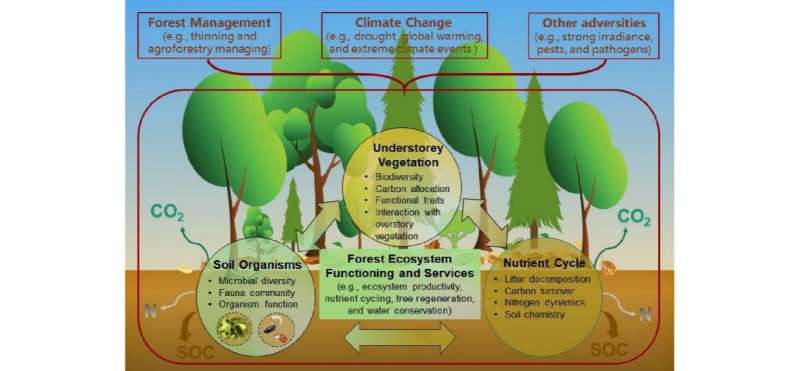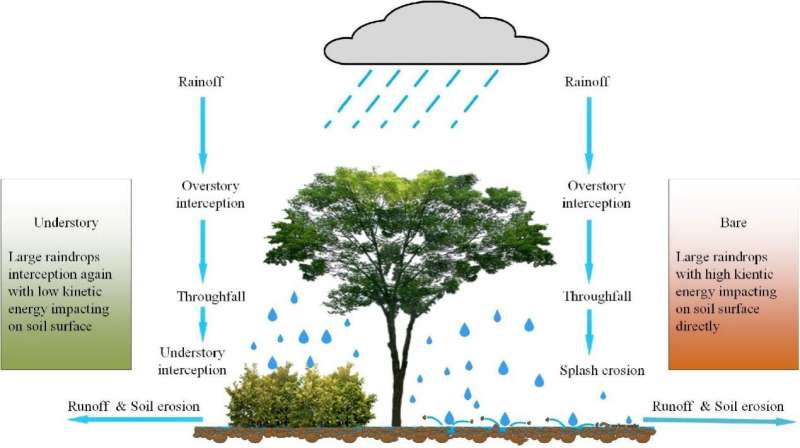This article has been reviewed according to Science X's editorial process and policies. Editors have highlighted the following attributes while ensuring the content's credibility:
fact-checked
proofread
The current status and future trends of forest understory vegetation

A review published in the journal Forestry Research focuses on understory vegetation biodiversity, regeneration, biomass, nutrient content and storage, carbon and nitrogen relationships, functional traits, litter decomposition, and interactions with overstory trees. It also covers the ecological effects of understory vegetation on soil chemistry, soil microbial communities, and soil and water conservation.
This work systematically summarizes the research status, shortcomings and future directions of these areas. Additionally, this review proposes that in the context of global climate change, future research should focus on the interaction between understory vegetation and canopy trees, as well as plant-soil interaction mechanisms driven by multiple climate or environmental factors and forest management practices at the regional scale, especially those involving lichen-moss layers and complex rhizosphere networks.
These studies can be achieved through the application of advanced methods, including isotope labeling technology, high-throughput sequencing analysis, and organic matter grouping. In addition, the article recommends the development of more non-destructive technologies, such as 3D lidar scanning and hyperspectral scanning, combined with manual biodiversity surveys to monitor and characterize the dynamics of understory vegetation.
In conclusion, this article provides an overview of the current status, progress, and future directions of research on forest understory vegetation, including topics focused on forest biodiversity, ecosystem structure and function, and ecological services. We propose that a better understanding of understory vegetation can guide the regeneration, restoration and reconstruction of degraded forest ecosystems to maintain the multi-layered structure, spatial pattern and functions of the ecosystem.

This improved understanding is critical to the effective management of understory vegetation in forest ecosystems, with potential benefits for both forest ecology and the economy. This review also provides scientific guidelines for professional technicians, managers, and policy makers to formulate better sustainable management practices for forests.
More information: Jiaojiao Deng et al, Forest understory vegetation study: current status and future trends, Forestry Research (2023). DOI: 10.48130/FR-2023-0006
Provided by Maximum Academic Press




















